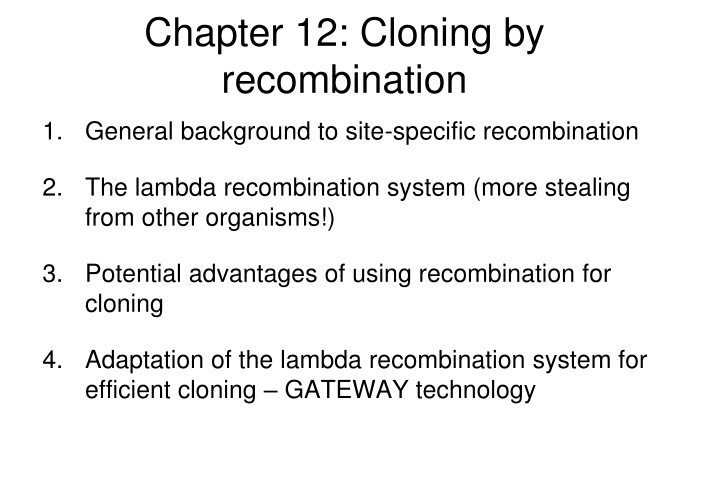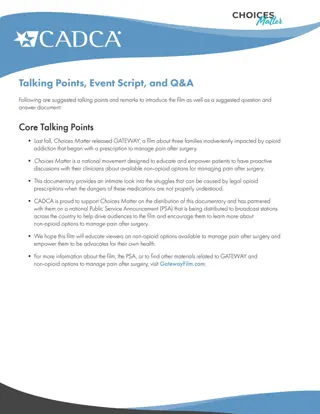
Cloning by Recombination: Lambda Recombination System and Advantages
Explore the world of cloning by recombination with a focus on the lambda recombination system and its potential advantages. Learn about site-specific recombination, inverted repeats, direct repeats, and the integration of bacteriophage lambda. Discover the efficient cloning possibilities offered by GATEWAY technology.
Download Presentation

Please find below an Image/Link to download the presentation.
The content on the website is provided AS IS for your information and personal use only. It may not be sold, licensed, or shared on other websites without obtaining consent from the author. If you encounter any issues during the download, it is possible that the publisher has removed the file from their server.
You are allowed to download the files provided on this website for personal or commercial use, subject to the condition that they are used lawfully. All files are the property of their respective owners.
The content on the website is provided AS IS for your information and personal use only. It may not be sold, licensed, or shared on other websites without obtaining consent from the author.
E N D
Presentation Transcript
Chapter 12: Cloning by recombination 1. General background to site-specific recombination 2. The lambda recombination system (more stealing from other organisms!) 3. Potential advantages of using recombination for cloning 4. Adaptation of the lambda recombination system for efficient cloning GATEWAY technology
Site-Specific Recombination - short specific sequences are required for recombination and are the only sites at which recombination occurs. - require specialized proteins to recognize these sites and to catalyze the recombination reaction at these sites.
Site-specific recombination involves two specific sites two types of site-specific recombination reaction 1. Inverted repeats If the two sites at which recombination will take place are oriented oppositely to one another in the same DNA molecule then the following illustrates the sequence of events that will take place: recombination at inverted repeats causes an inversion. 2. Direct repeats If the two sites at which recombination will take place are oriented in the same direction in the same DNA molecule then the following illustrates the sequence of events: recombination at direct repeats causes a deletion (or integration in the reverse direction)
Integration of bacteriophage lambda bacteriophage lambda is a temperate phage the phage will either follow a lytic growth pathway or a lysogenic growth pathway In the lytic growth pathway the phage replicates itself and lyses the host cell In the lysogenic growth pathway phage DNA is integrated into the host chromosome the phage essentially shuts itself down and enters a dormant state known as a prophage It can replicate & lyse the host at a later time The integration of phage DNA and the induction from lysogenic to lytic phase involves site specific recombination!






















